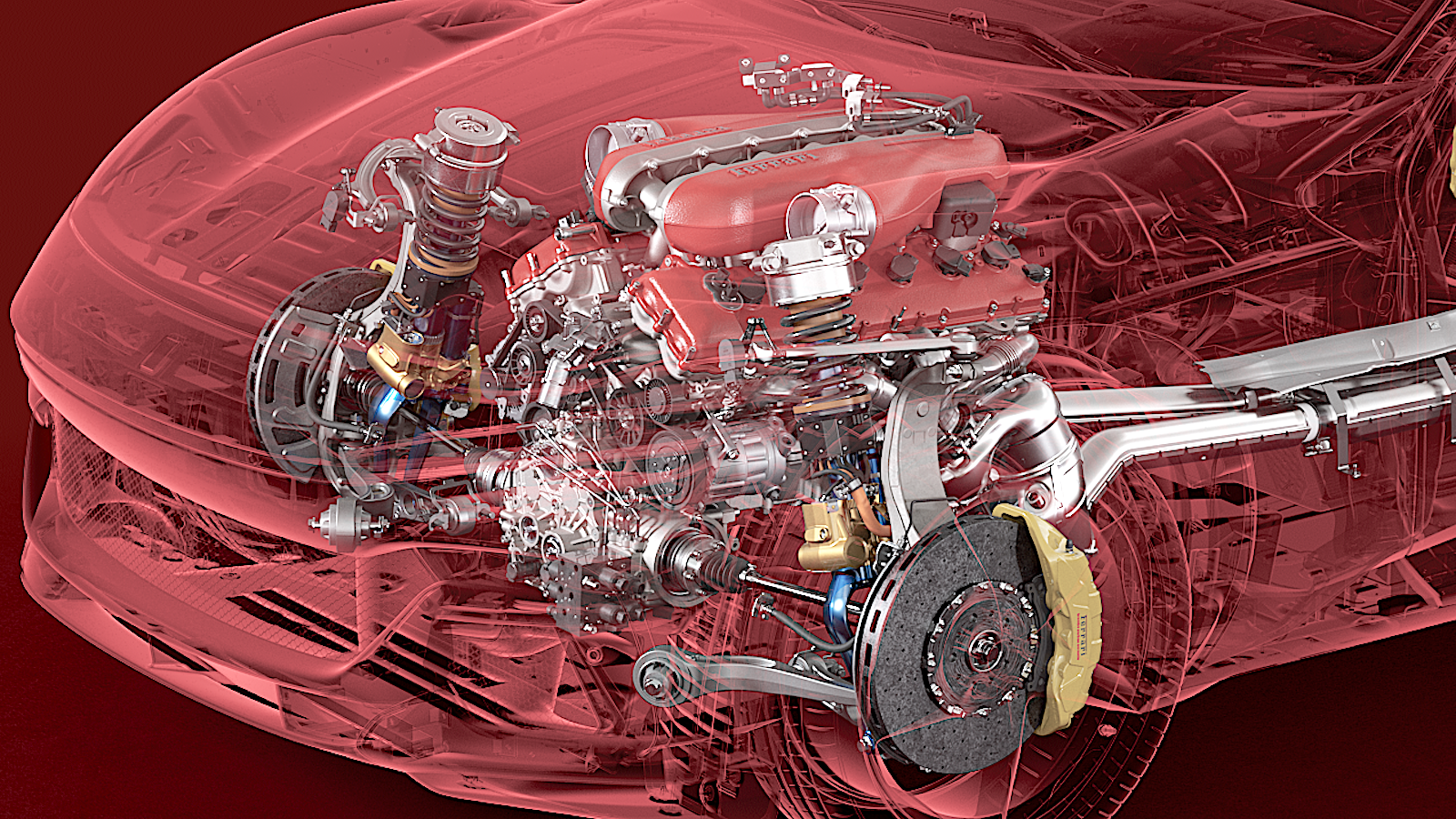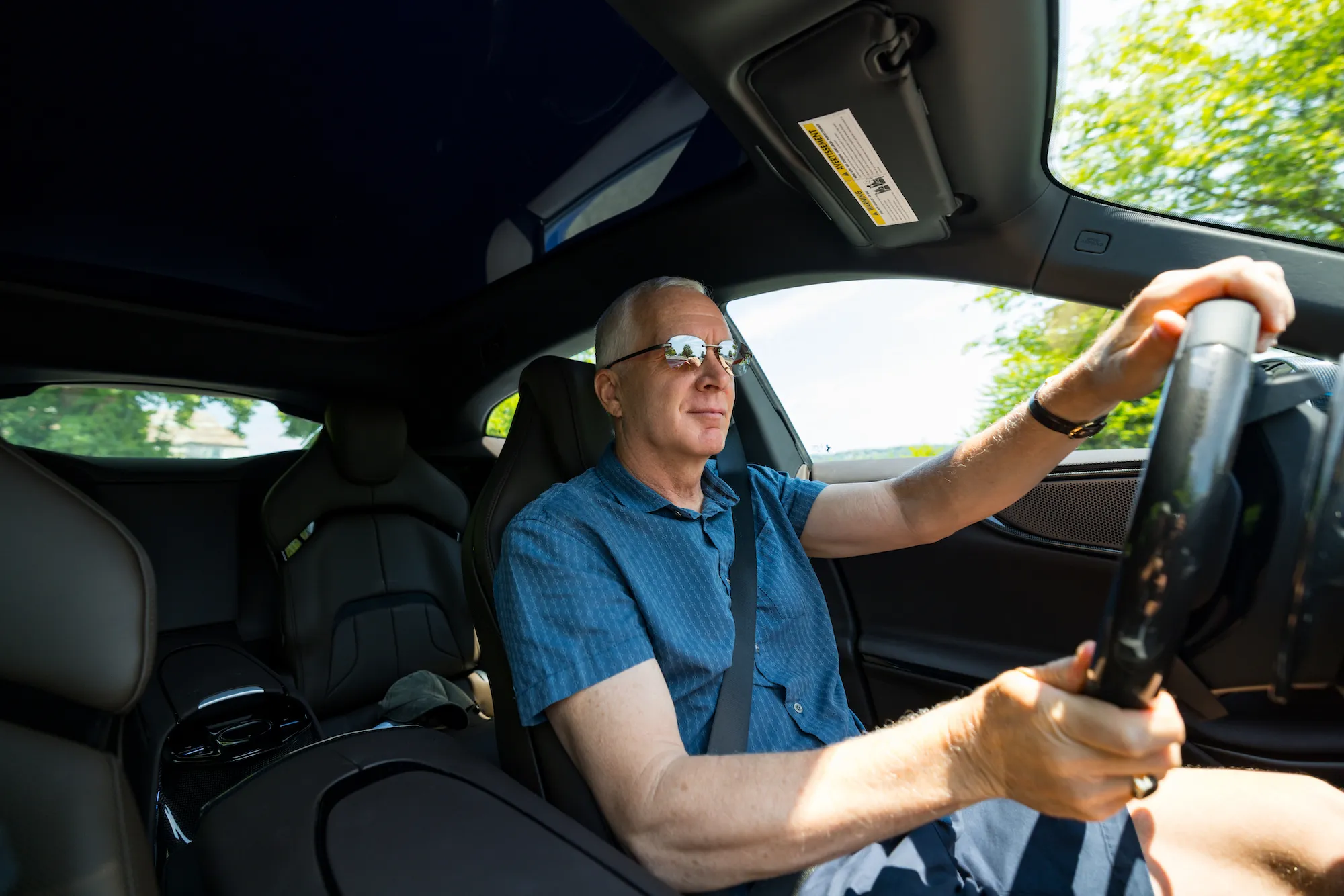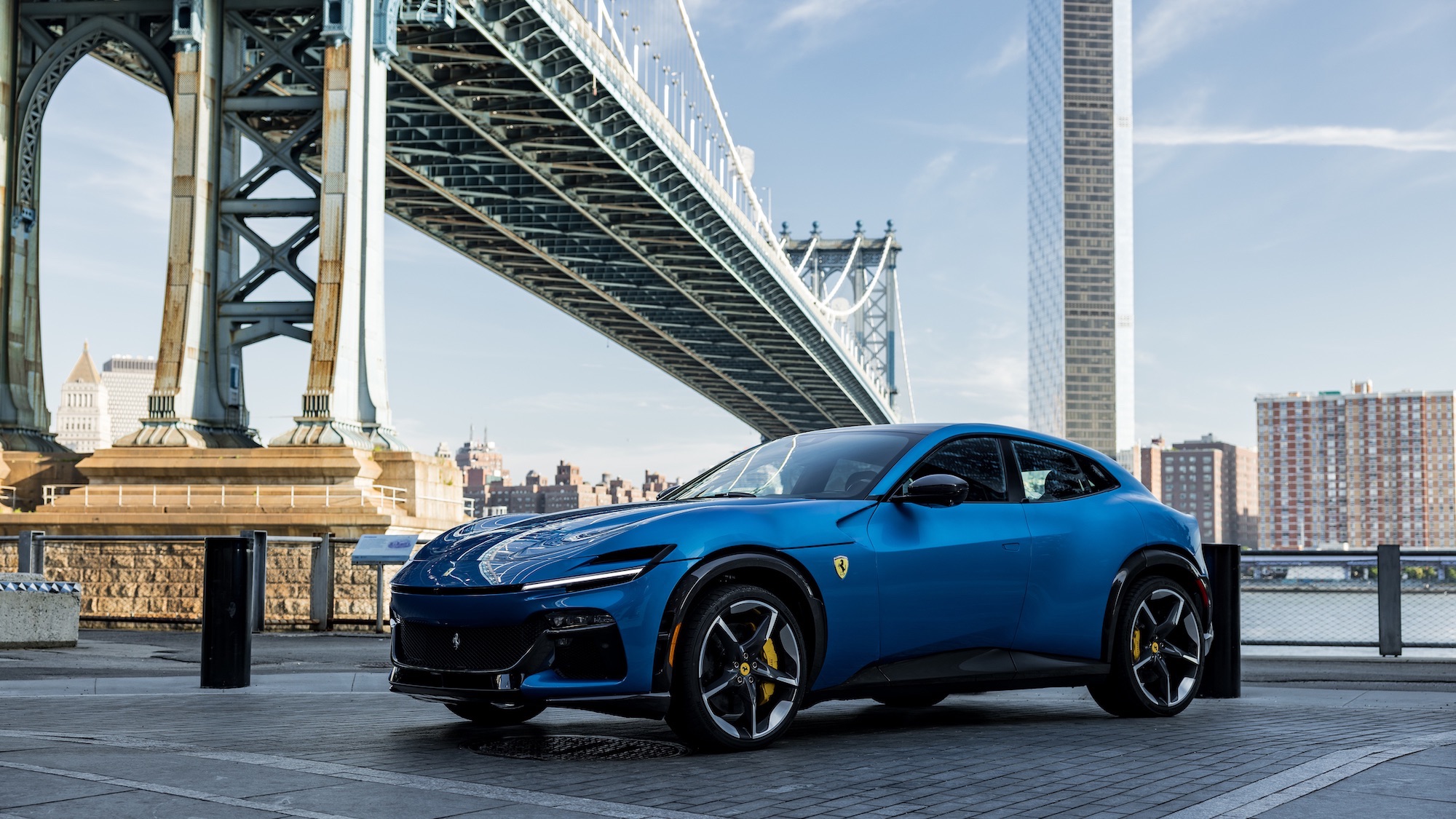Purists and traditionalists insist that companies like Ferrari continue to build only anachronistic two-seat coupes and roadsters even while drivers increasingly demand four-door practicality and hatchback flexibility of crossover SUVs.
Ferrari’s response has been to build the Purosangue, which is the best damn sport SUV in the world. But with an asterisk that I’ll explain later.
Numbers don’t lie, and the dynamic experience of driving the Purosangue backs those numbers with real-life thrills. Consider that the Purosangue’s naturally aspirated 6.5-liter V12 engine cranks out 715 horsepower, edging out the awesome 707-hp Aston Martin DBX707. It is enough to rip to 60 mph in less than 3.3 seconds in a car that can carry four occupants in genuine comfort with a load of luggage in the cargo bay.
Such capabilities are antithetical to traditional Ferrari qualities, so the company went on the offensive with the car’s name. “Purosangue” (say “poor-oh sang way” and remember to roll that “r”) translates literally as “pure blood” and idiomatically to “thoroughbred” like the racehorse breed.
The idea is to confirm that this SUV has earned its place in Ferrari’s family tree, as a descendent of cars like the 250 GTO, the F40, and the La Ferrari. The driving experience confirms the Purosangue’s claim to the family heritage.
The car looks positively sensational and it is fast as a vicious rumor, fulfilling the real requirements of a sports car. Uselessness might be a trait strongly associated with traditional sports cars, but it is not in fact an ironclad requirement.
The tech specs under the hood
Consider the amazing technology that makes this combination of performance and utility possible. Start with a look at the engine, which is derived from Ferrari’s long-running V12. Any low-hanging fruit has long since been harvested, leaving Ferrari’s engineers to claw out tiny gains from hard work on the details.
“To optimize engine torque without sacrificing the maximum power, we completely redesigned the shape of the intake plenum and intake manifold, revising volumes, diameters, and lengths that were subjected to numerous calculation loops,” explains Purosangue powertrain project manager Marzio Maresi. “The 3D calculations undertaken on the 6-into-1 header helped us find a geometry that optimized the gas flow into the catalytic converter.”

The powertrain team also whittled away internal friction, optimizing piston rings, bearing clearances, and the oil pump’s efficiency, Maresi said. Finally, Ferrari programmed the engine management system to run at the very edge of acceptable margins, with very precise control, in the manner of the company’s Formula 1 cars, whose engines only need to last a few races rather than the lifetime of a production car.
Purosangue also has an unusual solution for the all-wheel-drive system. The V12 engine sits at the front, but as far back under the hood as possible. It can do this because the 8-speed dual-clutch transmission is mounted at the rear axle rather than bolted to the back of the engine. That transmission is programmed to hold upshifts until the engine has revved into its powerband, which makes sense in sport mode. But when driving in comfort mode, it seems tedious for the engine to rev needlessly when the car could just upshift already.
Meanwhile there’s a two-speed transmission bolted directly to the front of the engine that routes power to the front wheels. The result is a 49/51 percent front/rear weight balance that is necessary for avoiding the understeer that comes when overworked front tires can’t deliver the grip needed to turn the car. There is a price to pay in terms of legroom, as the front-seat footwells are crowded by the space occupied by the engine in the central tunnel.
The engineering team exploited the V12’s unparalleled smoothness with a silent exhaust note when the car is driven gently in comfort mode. Switch to sport mode and step on the gas pedal and the Purosangue delivers the signature V12 howl that motivates people to splurge on cars with such engines rather than sensible twin-turbocharged V8s like the one in the DBX707.
Ferrari employs sophisticated Multimatic True Active Spool Valve active suspension, so the Purosangue delivers both the smooth ride expected of a luxury four-door and the handling required of a Ferrari. Using a 48-volt electric system, the TASV suspension adjusts proactively, providing exactly the response needed to match the circumstances.
Hitting the road
During a drive that started in Brooklyn, ended in Montreal, and covered rural highways and curvy mountain roads in Vermont in between the Purosangue’s ride was unfailingly comfortable on the rough surfaces and responsive in the curves.
The magical Multimatic suspension is aided in its task by the Purosangue’s lightweight but rigid aluminum chassis, which boasts a 30 percent increase in torsional stiffness and a 25 percent improvement in bending stiffness compared to the GTC4 Lusso, Ferrari’s wagon-esque four-seat predecessor to the Purosangue.
“The chassis is made entirely of high-strength aluminum alloys,” explains Purosangue body structure project leader Marco Musumeci. “It is a space frame structure composed of extruded profiles that delineate the structure’s main load lines, which are connected by castings that form the structure’s nerve centers. We can obtain very thin wall thicknesses, both on extruded sheet elements and castings. We don’t just use one alloy. There are several, each with its technical specifications.”
A cockpit and invisible chauffeur
Inside, the Purosangue is trimmed in soft Alcantara fabric that is made from 68 percent recycled polyester. Alcantara looks and feels like suede leather, without harming a single Alcantara beast.
The Purosangque’s real party trick is its back seat. The sleek, sloping roofline suggests that there would be little headroom in the back seat and the car’s taut lines imply difficulty of ingress and egress for rear-seat passengers. In fact, the Purosangue’s innovative rear-hinged rear doors swing wide open to provide superb access to what turns out to be an unexpectedly spacious rear seat, complete with ample rear headroom.
It really seems like magic to fit so much space into what looks like a small volume. Rear-hinged rear doors have been around for ages, but they usually show up on huge limousines like the Rolls-Royce Phantom, where any benefits in terms of accessibility are not apparent because of the car’s size.

Like the Phantom, the Purosangue’s doors are power operated, because it is difficult to reach them while seated. This adds to the impression the doors make, as if you have an invisible chauffeur there to open the door to your zoomy sports SUV.
The cockpit is designed with the instrument cluster display in front of the driver and the center of the dashboard gloriously free of an ugly infotainment display. However, Ferrari chose to simply relocate those functions to a display in front of the passenger’s seat, with little provision for operating the radio from the driver’s seat.
The company wants you to imagine Goose, Maverick’s Top Gun F-14 Tomcat Radar Intercept Officer, running the complex electronic gadgets for you from the passenger seat while you focus on the serious business of piloting.

But, in reality, you and I don’t have someone whose career requires them to ride along with us on every mundane trip to the supermarket. You’ll probably end up just playing music out of your phone, casually tossed onto the passenger seat, for short errands rather than attempt to cope with this.
This is annoying, but superfluous. More significant is the Purosangue’s high-tech brake-by-wire system. This means that there is no hydraulic connection between the brake pedal and the brake calipers at each wheel. Instead, the brakes are operated electronically by a pedal assembly that is essentially a Logitech driving sim rig. Unfortunately, it delivers the driver a similarly artificial feel while braking.
“I build my cars to go, not to stop.” That was fellow sports car titan Ettore Bugatti, not Enzo Ferrari. So maybe Ferrari will use the potential to reprogram the brake system for a more natural feel through a software update.
As it is, the initial touch of the brake seems to not deliver any result, prompting the surprised driver to step harder on the pedal. That’s when the Purosangue’s computer clamps down, providing aggressive stopping power when all that was ever wanted was a normal gentle stop.
Driven hard, when you go quickly for hard brake application diving into turns, the system works satisfactorily, and this was probably the focus of Ferrari’s development team. But we aren’t always carving corners, so they need to find a solution to provide smooth braking.
Final impre$$ions
My gorgeous Blu Corsa Purosangue’s base price was $423,686, and the as-tested bottom line was $572,079. The Pursosangue is a better vehicle than the Aston Martin DBX707, as it should be for twice the price.
But it is only better in some ways. There is no reason for a half million-dollar machine to make owners suffer through so many self-inflicted mistakes on things they’ll use every time they drive, like the brake pedal response and the infotainment system. Ferrari isn’t known for its responsiveness to customers’ wishes, but I think these are things they will address with software updates and future model year refreshes.


